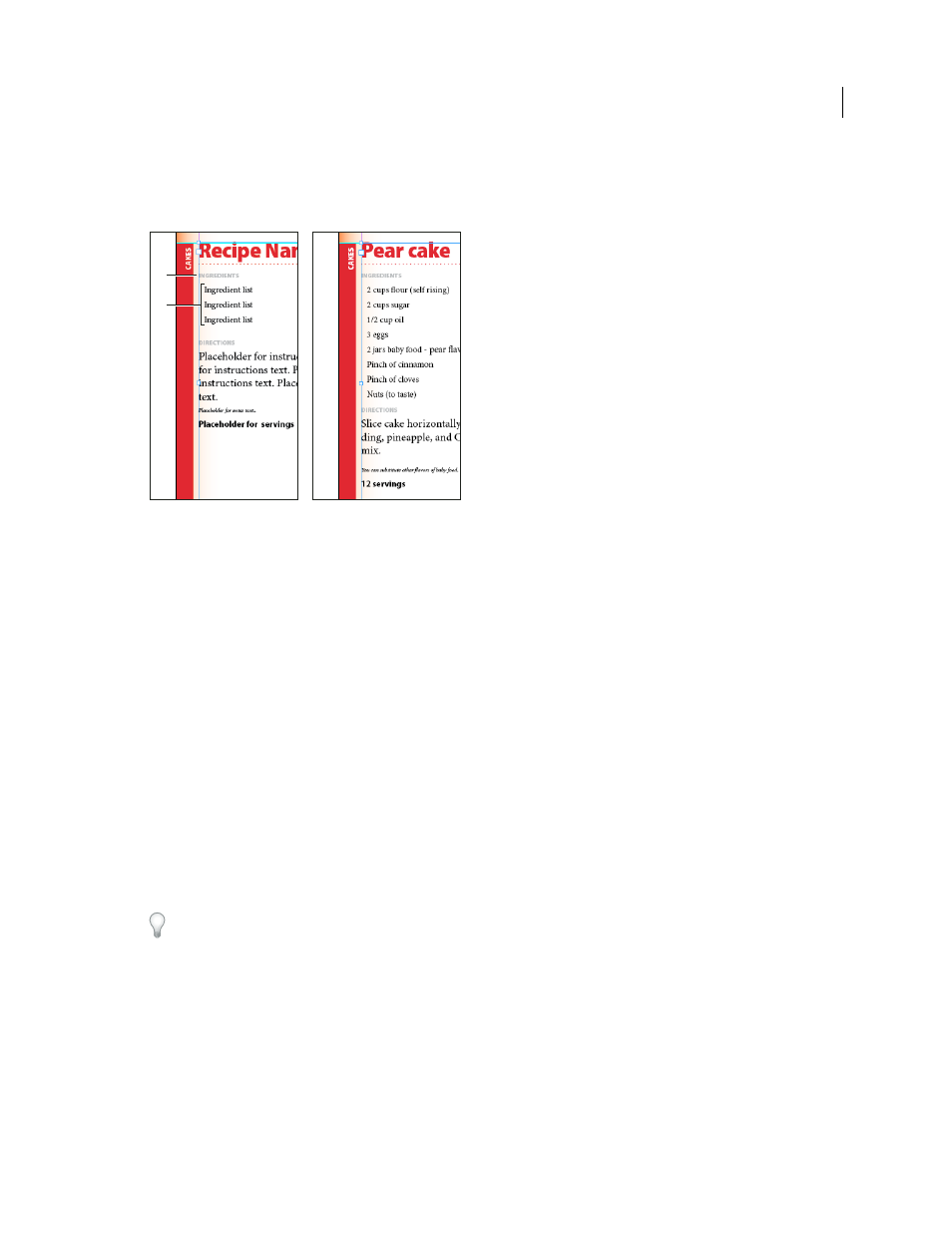Create a placeholder frame – Adobe InDesign CS5 User Manual
Page 582

576
USING INDESIGN
XML
Last updated 11/16/2011
You can also create placeholder text to ensure XML data is placed and formatted correctly on the page. Placeholder
text can also be used to include tabs, spacing, or labels (called static text) between the XML elements that will appear
in a frame.
Tagged placeholder text (left) and layout after import (right)
A. Returns and static text added between elements B. Placeholder text
For example, if you are importing and placing product information, you can separate the name, description, and price
of the product with a tab, and include labels such as “Product:” or “Price:” before the placeholder text entries for those
elements. When XML data is merged into the frame, static labels, spacing, and tabs are preserved between the content
elements.
Note: If you merge repeating XML data into your document and instruct InDesign to clone repeating elements, the static
text and spacing are also cloned for each instance of the data.
More Help topics
Create a placeholder frame
1 Using the Type tool, create a text frame for the XML content.
If you want imported XML content to flow from one frame to another, create multiple frames and thread them
together.
2 Open the Structure pane (View
> Structure > Show Structure) and the Tags panel (Window
> Utilities > Tags).
3 If the Tags panel does not contain tags with names identical to the XML elements you plan to import, create the
tags or load the tags from the XML file.
4 Tag the placeholder frame with the appropriate tag from the Tags panel. (When you tag a frame, any frames
threaded to it are assigned the same tag.)
5 If necessary, arrange or add elements in the Structure pane to match the elements and structure of the XML you
will be importing.
A
B
